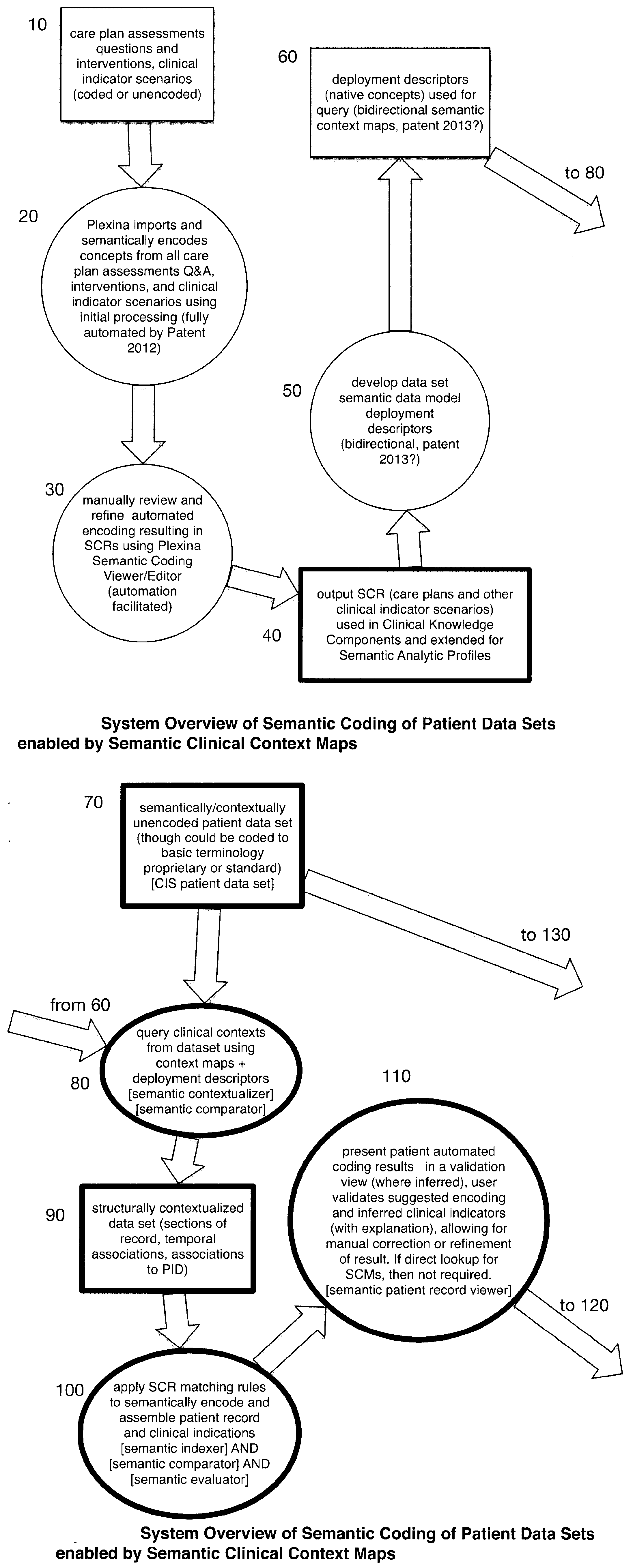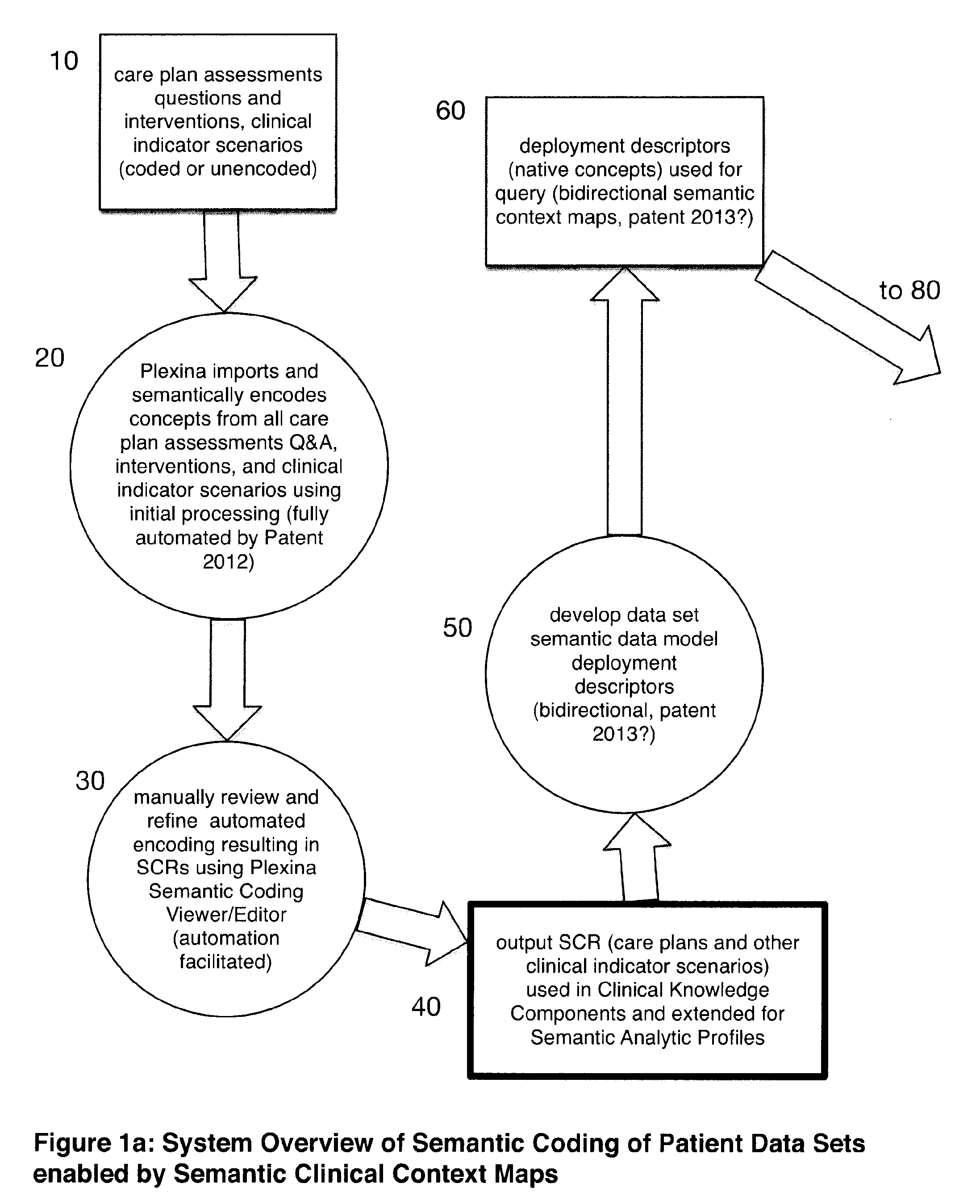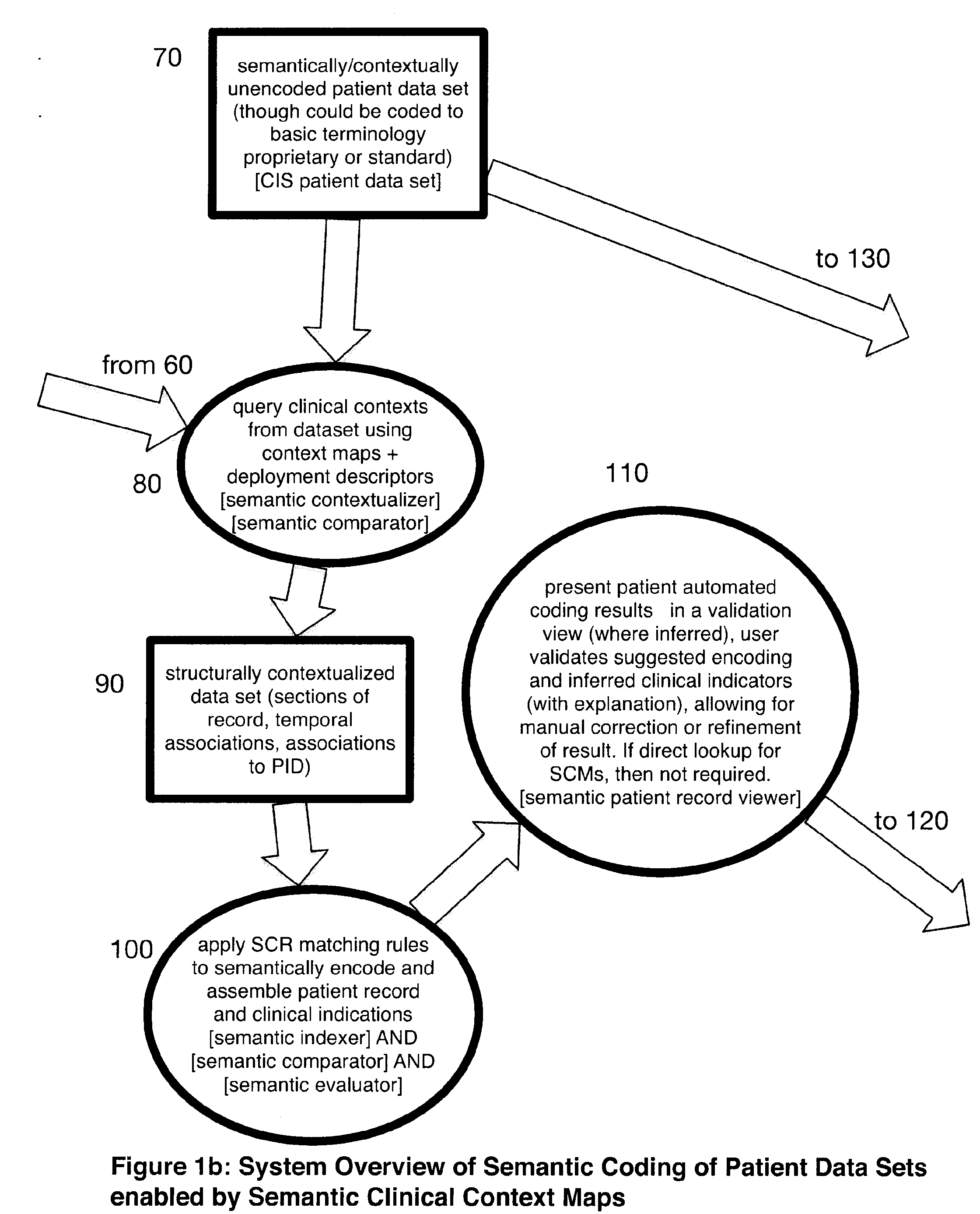System for converting native patient data from disparate systems into unified semantic patient record repository supporting clinical analytics
a technology for converting native patient data into a unified semantic patient record repository and supporting clinical analytics, which is applied in relational databases, instruments, data processing applications, etc., can solve the problem that records from one cis are rarely, if ever, directly portable to another cis
- Summary
- Abstract
- Description
- Claims
- Application Information
AI Technical Summary
Benefits of technology
Problems solved by technology
Method used
Image
Examples
Embodiment Construction
Module 1: Semantic CDR Constructor System
[0042]The current invention is a software application that can construct a Semantic Clinical Data Repository (“SCDR”) that is semantically accurate without the augmentation of CIS and in an automated way in situations such as where the Plexina Platform was used to deploy a CKM into a CIS.
[0043]Using the SCMs of the CKM in the reverse, the system can identify the CKM used in the delivery of care and form a Semantically encoded Patient Record (SPR).
FIGS. 1a, 1b and 1c—an Overview of One Embodiment of this Invention
[0044]Clinical Knowledge Components 10 such as care plan assessment questions, interventions, and clinical indicator scenarios or criteria are usually represented in free form text, or natural text description.
[0045]A prior implement of the Plexina Platform 20 automatically encodes the clinical knowledge components into native CIS terminologies and / or to semantic terminologies, creating a framed Semantic Context Map (“SCM”) with a sem...
PUM
 Login to View More
Login to View More Abstract
Description
Claims
Application Information
 Login to View More
Login to View More - R&D
- Intellectual Property
- Life Sciences
- Materials
- Tech Scout
- Unparalleled Data Quality
- Higher Quality Content
- 60% Fewer Hallucinations
Browse by: Latest US Patents, China's latest patents, Technical Efficacy Thesaurus, Application Domain, Technology Topic, Popular Technical Reports.
© 2025 PatSnap. All rights reserved.Legal|Privacy policy|Modern Slavery Act Transparency Statement|Sitemap|About US| Contact US: help@patsnap.com



